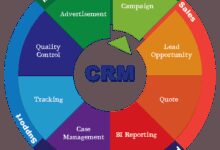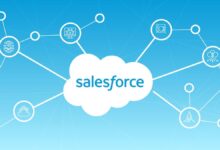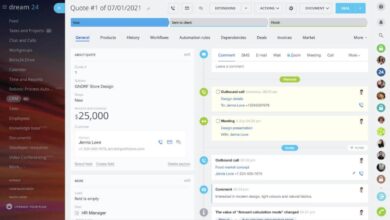CRM System Pricing: 7 Shocking Truths You Must Know in 2024
Thinking about upgrading your customer relationship game? CRM system pricing can make or break your decision. From startups to enterprises, understanding the real costs behind CRM platforms is crucial. Let’s dive into what you’re really paying for—and how to get the most value.
Understanding CRM System Pricing: What You’re Really Paying For

When businesses explore CRM system pricing, they often focus only on the monthly subscription fee. But the true cost of a CRM goes far beyond the sticker price. Hidden implementation fees, training costs, integration expenses, and customization charges can quickly add up. A transparent understanding of CRM pricing models is essential to avoid budget overruns and ensure long-term ROI.
Subscription-Based vs. One-Time Licensing Models
Most modern CRM platforms operate on a subscription-based model, typically billed monthly or annually per user. This pay-as-you-go approach lowers the initial barrier to entry, making it ideal for small and medium-sized businesses. However, legacy systems like Microsoft Dynamics 365 still offer perpetual licensing options, where you pay a large upfront fee but avoid recurring charges.
- Subscription models offer scalability and regular updates.
- Licensing models require in-house IT support but offer long-term cost control.
- Hybrid models are emerging, combining cloud access with on-premise control.
“The shift to subscription-based CRM pricing has democratized access, but it also means businesses pay more over time for convenience.” — Gartner, 2023
Factors Influencing CRM System Pricing
CRM system pricing isn’t one-size-fits-all. Several variables affect the final cost, including the number of users, data storage needs, automation features, and third-party integrations. For example, Salesforce’s pricing jumps significantly when you enable advanced analytics or AI-powered Einstein features.
- User count: Most vendors charge per user, per month.
- Feature tiers: Basic, Professional, Enterprise levels increase cost.
- Customization and API access: Advanced development tools cost extra.
Top CRM Platforms and Their Pricing Breakdown in 2024
To make an informed decision, let’s compare the leading CRM platforms and their current CRM system pricing structures. This analysis includes not just the headline rates but also the value delivered at each tier.
Salesforce: The Enterprise Benchmark
Salesforce remains the gold standard in CRM, but its CRM system pricing reflects its dominance. As of 2024, Salesforce offers several editions:
- Salesforce Essentials: $25/user/month — ideal for small teams.
- Salesforce Professional: $80/user/month — includes workflow automation.
- Salesforce Enterprise: $165/user/month — full customization and API access.
- Salesforce Unlimited: $330/user/month — 24/7 support and advanced security.
Additional costs include implementation (often $5,000+), training, and third-party app integrations via the AppExchange. For more details, visit Salesforce’s official pricing page.
HubSpot CRM: The Free Tier Game-Changer
HubSpot has disrupted CRM system pricing with its robust free plan. Unlike competitors, HubSpot offers contact management, email tracking, and deal pipelines at no cost. Paid tiers start at $20/month for the Starter plan and scale to $1,200/month for Enterprise.
- Free CRM: Unlimited users, basic automation.
- Starter: $20/month — includes live chat and forms.
- Professional: $800/month — marketing automation and reporting.
- Enterprise: $1,200/month — predictive lead scoring and custom objects.
HubSpot’s pricing is attractive for startups, but advanced features require significant investment. Learn more at HubSpot’s pricing page.
Microsoft Dynamics 365: The Integrated Powerhouse
Microsoft Dynamics 365 blends CRM and ERP functionalities, making it ideal for large organizations already in the Microsoft ecosystem. Its CRM system pricing is complex due to modular licensing.
- Dynamics 365 Sales Professional: $65/user/month.
- Dynamics 365 Customer Service: $95/user/month.
- Dynamics 365 Marketing: $2,000/month for up to 10K contacts.
- Enterprise plans can exceed $10,000/month for large deployments.
Implementation often requires Microsoft partners, adding $10,000–$50,000 in setup fees. Explore pricing at Microsoft Dynamics 365.
Hidden Costs in CRM System Pricing You Can’t Ignore
The advertised price of a CRM is rarely the final cost. Businesses often underestimate expenses related to onboarding, customization, and ongoing maintenance. Understanding these hidden fees is critical to accurate budgeting.
CRM system pricing – CRM system pricing menjadi aspek penting yang dibahas di sini.
Implementation and Onboarding Fees
Most CRM vendors charge for initial setup, data migration, and user training. For enterprise systems like Salesforce or Dynamics, implementation can cost 2–3 times the annual subscription fee. Even mid-tier platforms like Zoho CRM offer free setup only for basic plans; advanced configurations require paid consultants.
- Basic setup: $1,000–$5,000.
- Complex migrations: $10,000–$50,000.
- Ongoing support contracts: $2,000+/year.
Integration and API Usage Charges
CRMs don’t operate in isolation. Integrating with email platforms, marketing tools, or ERP systems often incurs extra costs. Some vendors limit API calls in lower tiers, forcing upgrades for high-volume operations.
- Zoho CRM: Free API access only on Standard plan and above.
- Salesforce: API calls are metered; excess usage billed monthly.
- HubSpot: Custom integrations require developer accounts ($500+/month).
“Over 60% of CRM projects exceed budget due to unforeseen integration costs.” — Forrester Research, 2023
Training and User Adoption Programs
A CRM is only as good as its users. Poor adoption rates are a leading cause of CRM failure. Vendors offer training programs, but they’re rarely free. Salesforce Trailhead is a notable exception, providing free learning paths. However, formal certification and internal training sessions cost time and money.
- Online courses: $200–$1,000 per user.
- On-site training: $5,000+ for a 2-day workshop.
- Change management consultants: $150/hour.
CRM System Pricing by Business Size: Tailoring the Fit
CRM system pricing varies significantly based on company size. What works for a 5-person startup won’t suit a 500-employee corporation. Let’s break down the best options by scale.
Startups and Small Businesses (1–50 Employees)
For small teams, affordability and ease of use are paramount. Free or low-cost CRMs with essential features are ideal. HubSpot CRM, Zoho CRM, and Freshsales offer competitive entry-level pricing.
- HubSpot CRM: Free forever plan with core features.
- Zoho CRM: Free for up to 3 users; $14/user/month for Standard.
- Freshsales: Free for up to 10 users; $15/user/month for Growth plan.
These platforms minimize upfront costs and scale as the business grows. However, customization is limited, and advanced reporting may require upgrades.
Mid-Sized Companies (50–500 Employees)
Mid-sized businesses need more robust automation, reporting, and integration capabilities. CRM system pricing at this level typically ranges from $50–$100/user/month. Platforms like Salesforce Professional, HubSpot Professional, and Microsoft Dynamics 365 Sales are common choices.
- Need for workflow automation and lead scoring.
- Integration with marketing and support tools.
- Dedicated customer success managers often included.
Implementation budgets should include data migration, user training, and third-party app costs. Total cost of ownership (TCO) can range from $50,000 to $200,000 annually.
Enterprises (500+ Employees)
Enterprise CRM system pricing is less about per-user cost and more about total solution value. Customization, security, scalability, and compliance are top priorities. Salesforce Enterprise, Microsoft Dynamics 365, and Oracle CX are dominant players.
- Annual contracts often exceed $100,000.
- Custom development and API access are standard.
- Dedicated support and SLAs are negotiated.
Enterprises often use a hybrid pricing model, combining cloud subscriptions with on-premise components. ROI is measured in improved sales cycles, customer retention, and data-driven decision-making.
Free vs. Paid CRM: Is the Free Tier Worth It?
The rise of free CRM tiers has changed the market. But are they truly free, or do they come with hidden trade-offs? Let’s evaluate the pros and cons.
Benefits of Free CRM Systems
Free CRMs lower the barrier to entry and allow small businesses to test functionality before committing financially. HubSpot and Zoho lead this space with feature-rich free plans.
CRM system pricing – CRM system pricing menjadi aspek penting yang dibahas di sini.
- No financial risk during trial phase.
- Basic contact, deal, and task management included.
- Easy migration to paid plans when scaling.
Limitations and Hidden Trade-Offs
Free CRMs often lack advanced features like automation, reporting, and integrations. They may also display vendor branding or limit user access.
- No phone support — only community forums.
- Restricted API access and customization.
- Vendor lock-in risk when upgrading.
“Free CRMs are great for starters, but they rarely support long-term growth without significant upgrades.” — TechRadar, 2024
How to Negotiate CRM System Pricing Like a Pro
CRM pricing is rarely fixed. Vendors expect negotiation, especially for annual contracts or large user counts. Knowing how to leverage your position can save thousands.
Timing Your Purchase for Maximum Discounts
Vendors often offer discounts at the end of quarters or fiscal years to meet sales targets. Booking a demo in March, June, September, or December increases your chances of securing a deal.
- End-of-quarter discounts: 10–20% off.
- Annual billing: Save 10–15% vs. monthly.
- Non-profit or startup programs: Up to 50% off.
Leveraging Competitor Quotes
Armed with competitor pricing, you can negotiate better terms. For example, showing a HubSpot quote to Salesforce may trigger a matched offer or added features at no cost.
- Use free trials to compare platforms.
- Request formal quotes from 2–3 vendors.
- Ask for added value: free training, extended support, or waived setup fees.
Customizing Your Plan to Avoid Overpaying
Don’t pay for features you don’t need. Many vendors allow custom bundles. For instance, you might skip marketing automation if you use a separate tool.
- Audit your team’s actual needs.
- Start with a minimal viable CRM setup.
- Scale features as usage grows.
Future Trends in CRM System Pricing (2025 and Beyond)
The CRM landscape is evolving. AI, usage-based pricing, and industry-specific models are reshaping how businesses pay for customer relationship tools.
Rise of AI-Powered Features and Their Cost Impact
AI is no longer a luxury. Features like predictive lead scoring, chatbots, and sentiment analysis are becoming standard—but they come at a premium. Salesforce Einstein, HubSpot AI, and Zia by Zoho add 20–40% to base pricing.
- AI add-ons: $10–$50/user/month.
- Usage-based AI billing: Pay per interaction or insight.
- AI training requires clean data, increasing prep costs.
Shift Toward Usage-Based and Outcome-Based Pricing
Traditional per-user models are being challenged. Some vendors now offer pricing based on email volume, API calls, or even sales outcomes. This aligns cost with value but introduces billing unpredictability.
- Sendinblue (now Brevo): Pay per email sent.
- Some startups charge a % of revenue generated via CRM.
- Usage spikes can lead to unexpected bills.
Industry-Specific CRM Pricing Models
Niche CRMs for real estate, healthcare, or education are adopting tailored pricing. These often include compliance features (HIPAA, GDPR) and vertical-specific workflows, justifying higher costs.
- Real estate CRMs: $49–$99/user/month.
- Healthcare CRMs: $75+/user/month with HIPAA compliance.
- Educational CRMs: Tiered by student enrollment.
How to Choose the Right CRM Based on Pricing and Value
Selecting a CRM isn’t just about cost—it’s about value. A cheap CRM that doesn’t integrate well or lacks scalability can cost more in the long run.
Calculating Total Cost of Ownership (TCO)
TCO includes subscription, implementation, training, integrations, and maintenance. A $20/user/month CRM with $20,000 in setup fees may be more expensive than a $50/user/month platform with free onboarding.
- Estimate 3–5 years of costs.
- Factor in productivity gains and sales efficiency.
- Include opportunity cost of poor adoption.
Aligning CRM Features with Business Goals
Map CRM capabilities to your objectives. If your goal is lead conversion, prioritize automation and lead scoring. If customer support is key, focus on ticketing and knowledge base features.
CRM system pricing – CRM system pricing menjadi aspek penting yang dibahas di sini.
- Sales teams: Pipeline management, forecasting.
- Marketing teams: Campaign tracking, segmentation.
- Support teams: SLA tracking, multi-channel support.
Free Trials and Proof of Concept (POC) Testing
Always test before you buy. Most CRMs offer 14–30 day free trials. Use this time to import real data, test workflows, and gather user feedback.
- Run a mini POC with a pilot team.
- Measure ease of use and feature relevance.
- Assess mobile access and third-party compatibility.
What is the average cost of a CRM system?
The average cost of a CRM system ranges from free (for basic tiers) to $330/user/month for enterprise platforms like Salesforce Unlimited. Most small to mid-sized businesses pay between $12 and $80 per user per month. Additional costs for implementation, training, and integrations can double the initial subscription price.
Is there a truly free CRM with no limitations?
No CRM is completely free with no limitations. While platforms like HubSpot and Zoho offer free plans, they restrict advanced features, API access, and support. Truly unlimited functionality requires a paid plan.
Can I negotiate CRM pricing with vendors?
Yes, CRM pricing is often negotiable, especially for annual contracts, large user counts, or nonprofit organizations. Vendors may offer discounts, waived setup fees, or added features to close the deal.
What are the most common hidden costs in CRM system pricing?
Common hidden costs include implementation fees, data migration, user training, API overages, and third-party integrations. These can add 50–200% to the base subscription cost.
Which CRM offers the best value for small businesses?
HubSpot CRM and Zoho CRM are widely regarded as the best value for small businesses due to their free tiers, ease of use, and scalable paid plans. Both integrate well with common business tools and offer strong customer support.
CRM system pricing is more than just a monthly fee—it’s a strategic investment in your customer relationships. From free tiers to enterprise suites, the right choice depends on your size, goals, and budget. By understanding the full cost structure, negotiating wisely, and aligning features with business needs, you can maximize ROI and drive long-term growth. The future of CRM pricing is shifting toward value-based models, so staying informed is key to making smart decisions in 2024 and beyond.
CRM system pricing – CRM system pricing menjadi aspek penting yang dibahas di sini.
Further Reading:






